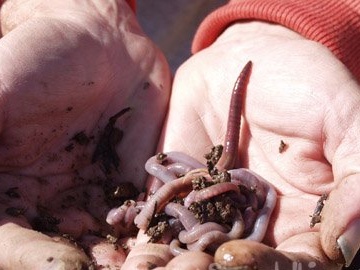
The technology for breeding worms indoors includes four main structural blocks:
A) Preparation of the substrate
B) Uterine culture
C) The main culture
D) Separation of worms from compost, drying, packaging, etc.
A) Preparation and conditioning of the substrate.
For successful culture of E.foetida, it is necessary that the processed substrate meet the following conditions: humidity 75-83%, pH 6.5-8.0, MPC of ammonia 0.5 mg / kg, MPC of carbon dioxide 6%, oxygen not less than 15%. The substrate is prepared, as a rule, immediately in large quantities, after which it is folded into piles and consumed as necessary.
B) Uterine culture.
In the uterine culture, under conditions that ensure maximum offspring, a pure population of the worm species used is contained. The volume of the uterine culture should provide the opportunity for worms to populate new portions of the processed substrate with a frequency determined by specific production volumes.
In the best case scenario, newly arriving substrate volumes should be populated by young worms or even cocoons of approximately the same age. This will provide an exit at the end of the technological chain of worms of the same age that have not yet begun reproduction. Thus, on the one hand, the methods of separating the worms from the substrate are simplified, since the worms will be large and about the same size, and on the other hand, there will be no waste of energy for reproduction.
Under favorable conditions, the uterine culture gives monthly up to 2 kg (about 50,000 copies) of young worms with 1 square. meter of working area. Up to 30-50% of all costs are spent on maintaining the uterine culture.
C) The main culture.
The main culture in indoor conditions is usually carried out in trays with a depth of 40-50 cm, which are placed on shelves. A substrate with a layer of 10-15 cm is placed in the trays. The substrate is populated by worms at the rate of 10-15 thousand specimens / square meter. Once every 7-10 days, a new substrate layer of 5-10 cm is placed in the trays. The necessary moisture content of the substrate is maintained by regular watering. The temperature at which the main culture is conducted is 20-22 degrees.
D) Separation of worms, preparation of biomass and compost for sale.
Worms can be separated from the substrate both mechanically, using a cylindrical sieve and other devices, or using a new feed as a bait. In the latter case, the worms are not damaged and can be used to populate new portions of the substrate.
Worms are usually used as a feed supplement in dried or steamed form, but can also be used as live food. Compost can be additionally enriched with mineral additives.
The main part of the breeding technology is the maintenance regimes of both the main and the uterine culture.
This includes factors such as:
All these factors have a decisive influence on the productivity and growth rate of worms, the intensity of processing of the substrate. Ultimately, it is the proper selection of these parameters that determines the economic efficiency of vermiculture.
The details of such biologically sound technology for breeding worms are the subject of patenting and are not published in Western sources and in the domestic press.
In addition, not only different species, but also individual populations of worms have their own ecological and physiological parameters, and for their effective cultivation special tests are needed, which are the subject of applied soil and zoological studies.
The development of biologically based modifications of the technology of breeding worms for a specific purpose (processing specific substrate mixtures, determining the final product) will, by optimizing the conditions of vermicultivation, increase the efficiency of an empirically created culture several times.
In the West, vermiculture is conducted, as a rule, in the open air under conditions that impede the use of intensive technology. The main emphasis is on the low cost of the product in the absence of heating costs, etc.
Since in our climate even a little intensive maintenance of vermiculture requires a heated room, the biologically sound technology of breeding worms will allow the most efficient use of controllability of conditions and avoid unnecessary costs.
